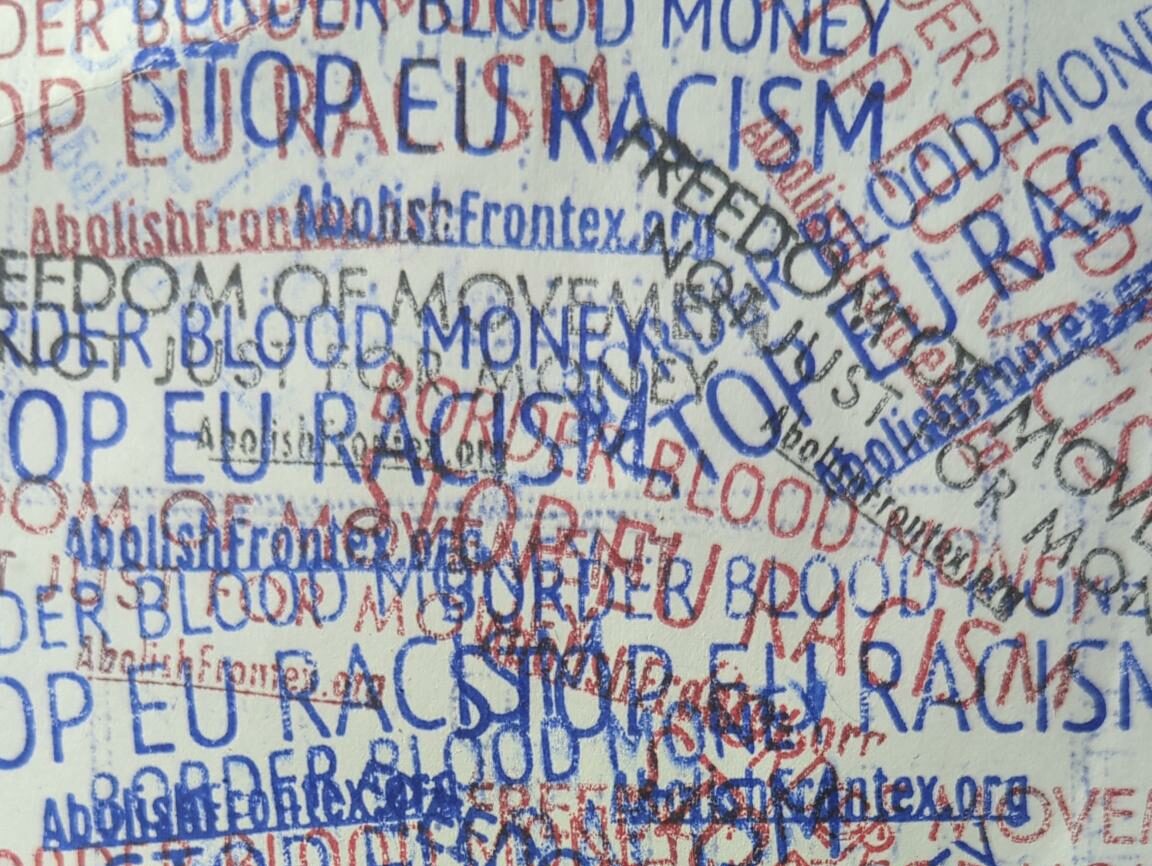Fortress Europe is intercontinental. The EU uses its economic power to exploit impoverished countries, forcing people onto deadly and dangerous journeys. It also pays third countries to intercept and detain people on the move before they can reach EU borders, leading to massive human rights violations. Private companies of the border-industrial-complex are profiting from these actions, often through Frontex as a driving force of border militarisation. While the EU’s border regime is making it harder and harder for people to move, money can cross international borders without any issues.
Below you find blueprints for stamps that call out the racist double standards of the EU and their usage of money as a form of power. Use a 3D-printer and spread the word!
How to make 3D-printed stamps:
1. Use the these files to 3D-Print the base of the stamp. We recommend using a 0.2mm or smaller nozzle. This will consume more time and energy but will make the print more readable, especially for the small letters on the link. Make sure that the model is mirrored, otherwise your print will be.
2. Sand the front of the plastic letters. The pattern of the 3D-print will need to be sanded off to level the stamper. You can technically use it without this but all the lines will look ‘dotted’. We recommend using as fine of a sandpaper as possible, to avoid breaking off any letters. (The Y in MONEY is the most endangered)
3. Attach a handle. You will need to be able to press with a lot of force on this stamp, to leave a print on water-resitent surfaces. To do that, glue a piece of wood to the back of the stamp that has roughly the size of the stamp. It doesn’t need to be exact. You can also print a handle with 3D, but we found it to be wasteful.
4. Prepare the additional items. You will need an ink pad, refill ink to saturate the pad, something to dry the print after stamping (we recommend a dry sponge or cleaning cloth) and a base mat, which is soft but not too soft (to find the right balance we recommend a piece of cloth that can be folded to fit the need.
How to use the homemade 3D-printed stamps:
“FREEDOM OF MOVEMENT – NOT JUST FOR MONEY – abolishfrontex.org”
“BORDER BLOOD MONEY – STOP EU RACISM – abolishfrontex.org”
- Surface: Even, slightly soft mat. A folded piece of cloth works well and can also be used to wrap all the items. Try to find out what works best for you.
- Inkpad: Tap multiple times lightly to get a good amount of ink.
- Stamp: Carefully place the stamp, to not smear the ink, then slowly increase pressure and press down hard. Don’t punch with the stamps, as the plastic might break.
- Dry Sponge: (Important for money!) Immediately dry the ink after printing on ‘water resistent’ surfaces. A dry sponge or cleaning wipe works well, but other items can be used as well.
Tip #1: Try it on paper first. The plastic is much harder than regular stamps and can break if treated poorly. However, this allows us to use normal, water-based ink on water-resistant bills.
Tip #2: Ink doesn’t stick as well to these stamps compared to regular rubber stamps. So you will need to saturate the inkpad much more (make it wetter) to get a clean print.
Tip for cash users: If you come into possession of a euro bill that has been stamped, just know that it can also be cleaned if you have trouble spending it. Stamp ink is water-solvent. If you wash them with soap and water you can remove most of the ink, even though a slight imprint will stay, from the pressure used to print it. Banks are obliged to exchange bills that are still more than 50% intact and these stamps would at most cover 20%.


